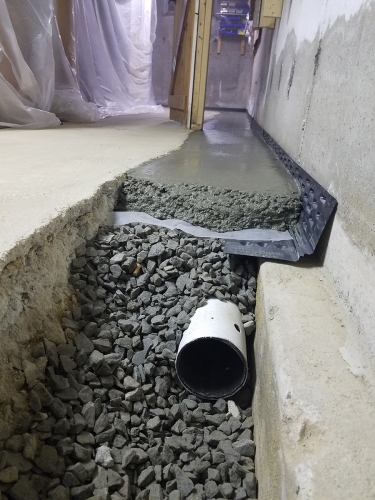Waterproofing is a crucial aspect of upkeeping any home or structure, yet it often goes overlooked until issues arise. As water penetrates structures, it can cause costly repairs, compromised safety, and even hazards due to mold and mildew growth. Comprehending the significance of waterproofing is crucial for every real estate owner, as it not only protects against instant damage but also boosts the overall durability and worth of a property.
This resource explores the fundamentals behind water-proofing, shedding light on why it is important, the multiple methods available, and how efficient waterproofing can protect you a fortune in future repairs. Moreover, we will debunk common myths surrounding waterproofing techniques and provide you with the knowledge to recognize signs that your place may demand attention. Whether you are looking to waterproof your basement, roof, or restroom, comprehending the principles of waterproofing will empower you to take informed decisions for your property.
The Significance of Waterproofing in Homes and Structures
Moisture protection is a essential aspect of maintaining the structural integrity and longevity of homes and buildings. It acts as a barrier against moisture infiltration, which can lead to a range of issues, including structural damage, the growth of mold, and health problems. Without proper waterproofing, properties are at risk to damage caused by water that can undermine not only the physical structure but also the quality of air quality indoors. This makes waterproofing crucial for ensuring a secure and healthy living environment.
In addition to safeguarding against damage from water, waterproofing can yield significant cost savings over the long term. Fixing water damage usually requires substantial work, from repairing the structure to removing mold, which can be expensive. By actively waterproofing a property, property owners and managers of buildings can avoid these problems from arising, effectively saving a significant amount of money in future repairs. This proactive step is an investment that yields returns in the future, reinforcing the importance of tackling waterproofing needs promptly.
Furthermore, proper waterproofing plays a role in energy conservation within a building. By keeping water out, structures can maintain consistent temperatures, lowering the need for excessive heating or cooling. This not only reduces energy costs but also enhances overall comfort. As energy efficiency becomes ever more important, the role of waterproofing in sustainable construction is clear, making it a key consideration for both newly constructed and older structures.
Fundamental Waterproofing Methods and Strategies
One of the most efficient methods for moisture-proofing is the use of protection systems, which create a shield against water intrusion. These systems can include specific membranes applied to both inside and exterior surfaces, such as walls and foundations. By sealing off potential access points, these barriers prevent water from penetrating the building, reducing the risk of water damage significantly. Choosing the appropriate type of membrane for your unique needs is essential, as different materials offer varying levels of durability and resistance.
Another vital strategy is proper water management management. Installing a well-designed drainage system around your premises can redirect moisture away from exposed areas, such as basements and bases. This can include drainage systems, sump pumps, and drain pipes that are directed away from the building. Proper drainage not only reduces water accumulation but also enhances the durability of waterproofing systems and protects your home from the harmful effects of flooding and dampness.
In addition to protection systems and drainage, the application of waterproof coatings is essential for enhancing the safeguarding of surfaces prone to moisture exposure. These coatings can be used on roofs, partitions, and decks to create a waterproof layer that defies moisture and prevents mold development. Selecting the right coating is important to ensure it withstands environmental conditions, thus prolonging the durability of your waterproofing solutions. Scheduled https://blogfreely.net/firdinghy8/waterproofing-cisterns-and-swimming-pools-best-practices and inspections are also important to ensure that these protective measures remain functional over time.
Financial Consequences of Neglecting Waterproofing

Disregarding waterproofing can lead to significant financial consequences for homeowners and building managers. Water damage can compromise structural integrity, requiring costly repairs or even renovations. A single leak can escalate into widespread damage, affecting walls, floors, and foundations. This not only increases repair costs but can also lead to a decrease in property value, making any future transfer more difficult.
In addition to structural repairs, the costs connected to mold and mildew removal can add up quickly. https://cloudshield3.werite.net/green-sealant-methods-people-can-experiment-with thrives in damp conditions, leading to possible health risks and necessitating professional remediation services. The longer the moisture issue continues, the more severe the damage becomes, ultimately costing far more than initial waterproofing measures would have.
Furthermore, neglecting waterproofing can cause increased energy bills. Damp building materials can lead to greater energy loss, forcing HVAC systems to strain more to maintain comfortable temperatures. By opting for waterproofing solutions initially, property owners not only save money on repairs but also enjoy ongoing savings on energy costs, boosting overall building efficiency.
